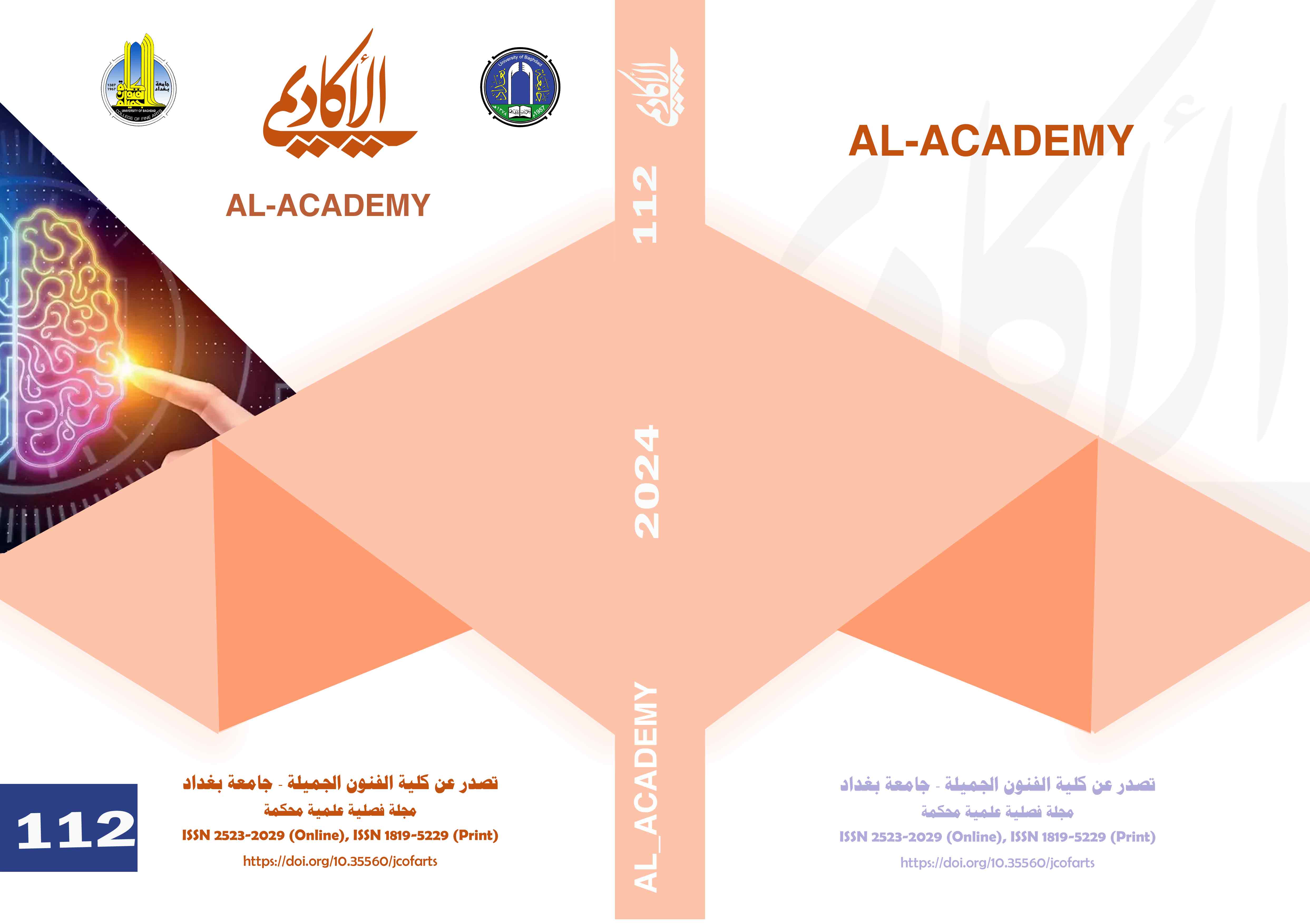Manifestations of utopia and dystopia in the magazine cover design
DOI:
https://doi.org/10.35560/jcofarts1394Abstract
Utopia and dystopia appeared in many areas of life. Some design institutions tried to highlight and realize them in graphic applications, the cover of the magazine, which is considered one of the graphic applications. The first chapter in the current research was organized according to axes. The research problem in it was formulated according to the question: How were utopias and dystopias established in The magazine cover? The importance of the research was theoretical and practical, and the goal of the research was to identify utopias and dystopias and how to perpetuate them. The research moved into the cognitive boundaries of 2021 around the covers of the American magazine (THE WEEK) as an area of research. The second chapter (theoretical framework) contained two axes. The first axis was entitled: (Types of Utopia and Dystopia). The second axis It was entitled (Constructive Methods for Utopia and Dystopia). The third chapter included an explanation of the methodology, choosing a sample, the research tool, and analyzing the sample, which amounted to (3) models in a (intentional - non-probabilistic) manner. The fourth chapter detailed the results, conclusions, recommendations and proposals, and the results that were branched out: The American magazine (THE WEEK) reported its planning of developments. The technology that occurred in the creation of ideas, and it was concluded: There is an administrative policy that directs the design work in many companies that are concerned with designing the magazine cover in presenting ideas that often raise questions in the public opinion. Then the researcher recommended benefiting from international design experiences in designing the magazine cover. It is necessary to know the methods of designers, and the truth The chapter proposes: The utopia of intellectual trends and their reflection on graphic applications. Then write references.
References
- Al-Douri, S. A. (2000). The relationship of space and time and its effects in two-dimensional design. Baghdad: Doctoral thesis, College of Arts, University of Baghdad.
- Al-Hamdani, F. Y. (2006). Color is a civilization - readings on experiences from international plastic art. Baghdad: House of Cultural Affairs.
- Al-Hussami, A. a. (2022). Imagining dystopia in novelistic discourse. The Hashemite Kingdom of Jordan: Kunooz Publishing House.
- Al-Qamah, n. s. (2018). The literature of the corrupt city is a transition from imaginary literature to real reality. Egypt: Egyptian Academy.
- Aqaq, Q. (2001). The significance of the city in contemporary Arabic poetic discourse. Damascus: Arab Writers Union Publications.
- Attia, A. (1985). In the world of art. Beirut: Arab Foundation for Studies and Publishing.
- Bahia, A. a. (1997). Building rules for content semantics in linear configurations. Baghdad: Doctoral thesis at the College of Arts, University of Baghdad.
- Bowles, D. (2000). great editing. blemont: wads worth.
- Decimal. (2020). About the concept of utopia and dystopia, an introduction to inspiration in contemporary photography. Egypt: Research in the Journal of Art Education and Arts.
- Ghazwan, M. A. (2006). The heritage symbol in contemporary print design. Baghdad: House of Cultural Affairs.
- Hospital, G. K. (2021). The poetics of the city in the contemporary Iraqi theatrical text. Baghdad: College of Fine Arts.
- Hussein, S. M. (1973). Advertisement entries. Cairo: Al-Shaab Press House.
- Issa, T. (2000). San Simon. Cairo: Dar Al-Maaref.
- krzysztof. (1996). polish film poster. america: lipies.
- Mahmoud, A. a. (2003). Photographs in media magazines. Baghdad.
- More, Thomas. 2012. Utopia. Translated by Dominic Baker-Smith. New York: Penguin Classics.
- Morton, R. (1979). interior design from the home. new york: McCraw hillbook.
- Murad, A. A. (2021). Dystopia, nightmares of corrupt cities in literature and art. Baghdad: Dijlah Academic House.
- Murad, A. A. (2021). Nightmarish dystopias of corrupt cities in cities and art. Baghdad: Dadar Tigris Academy.
- Mustafa, A. (2001). The significance of form: a study in formal aesthetics and a reading of art books. Beirut: Arab Renaissance House.
- Ramah, J. A. (2010). The aesthetics of stylistic diversity in the Polish poster. Baghdad: Master’s Degree, College of Fine Arts, University of Baghdad.
- Sahib, Z. (2004). Studies in the structure of art. Baghdad: Al-Raed Scientific Library House.
Shafiq, H. (2008). Introduction to advertising. Cairo: Al
- Shalak, A. (1982). Art and beauty. Beirut: University Foundation for Studies and Publishing.
- Shawke. A. (1990). Art and design. Egypt: Faculty of Education, Helwan University.
- Sheikh, A. B. (2018). Dystopian scenes in the novel Jamlikia Arabia. Algeria: Al-Allama Magazine.
- Shia, K. (2012). Utopia is a critical criterion. Baghdad: Dar Al Mada for Culture and Publishing.
- Shiraz, st. a. (2007). Color organization. Cairo: Dar Al-Kutub.
- https://www.zinio.com/recent-issues/the-week-magazine-m3441.
Downloads
Published
Issue
Section
License
Copyright (c) 2024 Hassan Falih Hassan, Nsiyf Jassem Mohammed

This work is licensed under a Creative Commons Attribution 4.0 International License.













